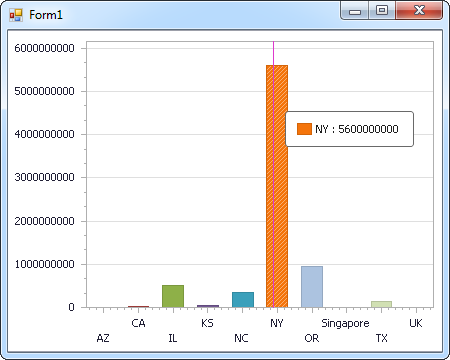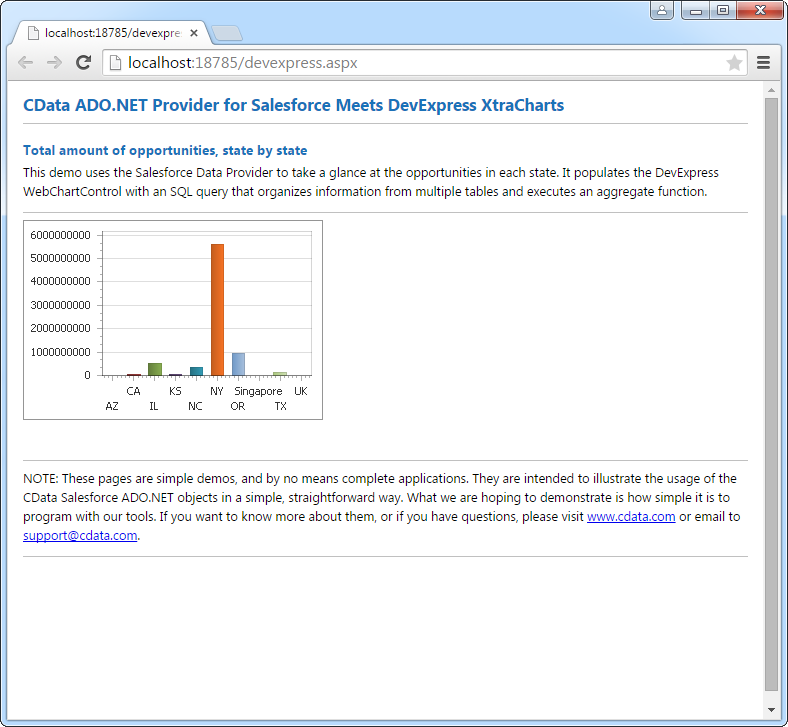Discover how a bimodal integration strategy can address the major data management challenges facing your organization today.
Get the Report →DataBind HubSpot Data to the DevExpress Data Grid
Use the CData ADO.NET Provider for HubSpot with the DevExpress Windows Forms and Web controls to provide HubSpot data to a chart.
The ADO.NET Provider for HubSpot by CData incorporates conventional ADO.NET data access components compatible with third-party controls. You can adhere to the standard ADO.NET data binding procedures to establish two-way access to real-time data through UI controls. This article will demonstrate the utilization of CData components for data binding with DevExpress UI Controls (Windows Forms and Web controls), specifically binding to a chart that visualizes live data.
HubSpot uses the OAuth authentication standard. You can use the embedded OAuthClientId, OAuthClientSecret, and CallbackURL or you can obtain your own by registering an app.
See the Getting Started chapter of the help documentation for a guide to using OAuth.
Windows Forms Controls
The code below shows how to populate a DevExpress chart with HubSpot data. The HubSpotDataAdapter binds to the Series property of the chart control. The Diagram property of the control defines the x- and y-axes as the column names.
using (HubSpotConnection connection = new HubSpotConnection(
"InitiateOAuth=GETANDREFRESH")) {
HubSpotDataAdapter dataAdapter = new HubSpotDataAdapter(
"SELECT Slug, PageViews FROM Prospects", connection);
DataTable table = new DataTable();
dataAdapter.Fill(table);
DevExpress.XtraCharts.Series series = new DevExpress.XtraCharts.Series();
chartControl1.Series.Add(series);
series.DataSource = table;
series.ValueDataMembers.AddRange(new string[] { "PageViews" });
series.ArgumentScaleType = DevExpress.XtraCharts.ScaleType.Qualitative;
series.ArgumentDataMember = "Slug";
series.ValueScaleType = DevExpress.XtraCharts.ScaleType.Numerical;
chartControl1.Legend.Visibility = DevExpress.Utils.DefaultBoolean.False;
((DevExpress.XtraCharts.SideBySideBarSeriesView)series.View).ColorEach = true;
}

Web Controls
The code below shows how to populate a DevExpress Web control with HubSpot data. The HubSpotDataAdapter binds to the Series property of the chart; the Diagram property defines the x- and y-axes as the column names.
using DevExpress.XtraCharts;
using (HubSpotConnection connection = new HubSpotConnection(
"InitiateOAuth=GETANDREFRESH"))
{
HubSpotDataAdapter HubSpotDataAdapter1 = new HubSpotDataAdapter("SELECT Slug, PageViews FROM Prospects", connection);
DataTable table = new DataTable();
HubSpotDataAdapter1.Fill(table);
DevExpress.XtraCharts.Series series = new Series("Series1", ViewType.Bar);
WebChartControl1.Series.Add(series);
series.DataSource = table;
series.ValueDataMembers.AddRange(new string[] { "PageViews" });
series.ArgumentScaleType = ScaleType.Qualitative;
series.ArgumentDataMember = "Slug";
series.ValueScaleType = ScaleType.Numerical;
((DevExpress.XtraCharts.SideBySideBarSeriesView)series.View).ColorEach = true;
}







